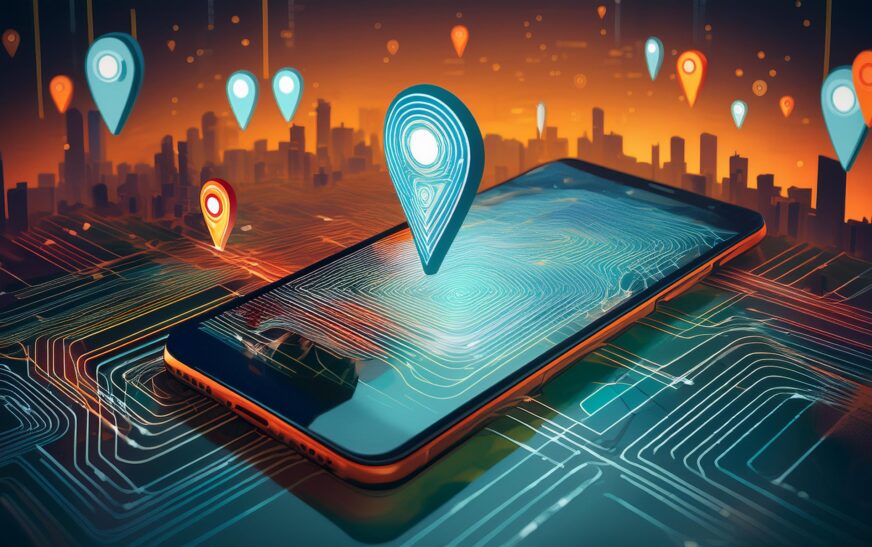Imagine you are expecting a guest to visit you for the first time, and you are guiding them manually through the address. It will be a complicated and daunting task. Won’t it? This is where technology comes as a boon. With the Location sharing feature, you can get rid of manual assistance. It plays a vital role in navigation, safety, and social connectivity. Whether guiding a lost friend, checking on family members, or receiving delivery updates, this technology integrates seamlessly into everyday life. Understanding how it works can help users utilize it effectively while safeguarding their privacy.
The Basics of Location Sharing
Location sharing relies on advanced technology to provide real-time location data. It combines multiple systems such as GPS, Wi-Fi, cellular networks, and Bluetooth. These systems work together to determine your location accurately and make it accessible to apps and platforms. This real-time data is then shared with chosen contacts, applications, or servers, enabling seamless coordination and communication.
GPS: The Backbone of Location Sharing
GPS (Global Positioning System) is the core technology that powers this facility. It uses a network of satellites to calculate precise geographic positions. Devices with built-in GPS receivers communicate with these satellites to provide exact coordinates. GPS is highly reliable outdoors, perfect for navigation apps and tracking systems. However, it might lose accuracy indoors, requiring other technologies to assist.
Wi-Fi and Cellular Networks for Location Accuracy
When GPS signals are unavailable or weak, devices switch to Wi-Fi or cellular networks. Wi-Fi location sharing works by identifying and matching nearby hotspots to a database of known locations. Cellular networks, on the other hand, use nearby towers to triangulate a device’s position. These methods are less precise than GPS but are still effective in urban environments or enclosed spaces.
Bluetooth and Indoor Positioning
Bluetooth plays a crucial role in enhancing location sharing, particularly indoors. It connects with small devices known as beacons, which transmit signals to nearby smartphones. This helps apps determine a user’s position within a building. Indoor navigation systems in malls or airports often rely on Bluetooth to offer accurate directions, demonstrating its importance in modern technology.
How Applications Use Location-Sharing
Applications utilize location sharing to provide tailored services. Its applications are diverse, from finding the fastest route to keeping families safe.
Navigation Apps: Guiding Users Seamlessly
Apps like Google Maps and Waze rely heavily on location sharing to guide users. They offer real-time directions, traffic updates, and estimated arrival times. These features make them indispensable for drivers, pedestrians, and cyclists alike. Navigation apps also allow users to share their locations with others, ensuring smooth coordination during trips or meetups.
Social Media Platforms: Adding a Personal Touch
Social media apps like Instagram, Facebook, and Snapchat integrate location sharing to enhance user experiences. Features like location tags or real-time sharing help users stay connected with friends. For example, sharing your location during an event makes it easier for friends to find you. This functionality adds value by blending convenience with fun.
Family Safety Apps: Ensuring Peace of Mind
Safety-focused apps such as Life360 or Google Family Link use location sharing to keep families connected. Parents can monitor their children’s whereabouts, ensuring safety during school commutes or outings. These apps also send alerts for unusual activity, providing an extra layer of security.
Privacy Concerns and Staying Safe with Location Sharing
While location sharing has many advantages, it comes with privacy concerns. Sharing your location data can expose personal information if not managed carefully.
Protecting Your Data While Using Location Features
Before enabling location sharing, check an app’s privacy policies and permissions. Use settings that allow you to share your location only with trusted individuals. Turn off location access for apps that don’t need it, and review your permissions regularly. Responsible usage can help you enjoy the benefits of location sharing while maintaining your security.
Conclusion
Location sharing is crucial in modern technology, enhancing connectivity, safety, and convenience. From navigation apps to family safety tools, it simplifies communication and makes daily tasks easier. However, users must stay cautious about sharing their data to avoid privacy risks. By adjusting app settings and sharing wisely, you can enjoy the advantages of this fantastic facility without compromising your safety.










1 Comment
Reading this felt like having a conversation with someone who knows exactly how to make you see things in a new light.